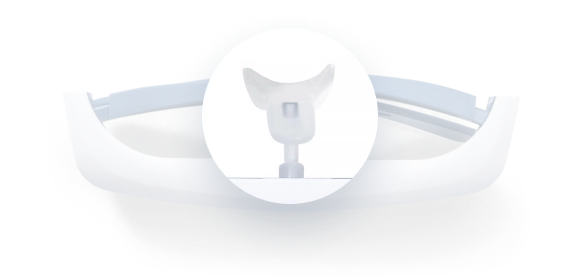Світлотерапія передбачає вплив на людину штучного джерела світла. Це допомагає компенсувати обмежений вплив сонячного світла на людей. Сучасні прилади для світлотерапії також можуть випромінювати інші кольори, такі як синій, фіолетовий і червоний, які пропонують різні переваги для організму.
Світлотерапія підвищує пильність і сприяє послідовним і стабільним режимам сну. Він вирівнює біологічний ритм вашого мозку, допомагаючи збалансувати активність серотоніну та покращуючи ваш настрій.
У цій публікації ми обговоримо, як це працює, його використання, а також типи світлотерапії та доступні пристрої, щоб допомогти вам визначити, чи підходить це вам.
Як працює світлова терапія?
Світлотерапія допомагає насолоджуватися перевагами сонячного світла, не виходячи на вулицю. Тип світла, випромінюваного приладом для світлотерапії, імітує природне сонячне світло, яке може спричинити хімічні зміни у вашому мозку, щоб підняти настрій, збільшити енергію та збалансувати режим сну.
Під час світлової терапії ви піддаєтеся певній кількості світла, виміряній у люксах, на основі рекомендованої експозиції для терапевтичних ефектів. Як правило, інтенсивність світла коливається від 2500 до 10000 люкс. Тривалість та інтенсивність впливу може варіюватися в залежності від індивідуальних потреб.
Деякі люди потребують обмеженого впливу, оскільки вони можуть мати певні захворювання або приймати ліки, такі як нейролептики чи антибіотики, які підвищують їхню чутливість до світла.
Завжди бажано проконсультуватися з медичним працівником перед початком світлотерапії, особливо якщо у вас є проблеми зі здоров’ям або ви приймаєте ліки.

Для чого використовується світлотерапія?
Світлотерапія в основному використовується для допомоги у виробленні та регуляції найважливіших гормонів організму: мелатоніну та серотоніну. Мелатонін допомагає вам спати, а серотонін змушує вас почуватися неспаними та бадьорими протягом дня.
Це також допомагає вирішити такі захворювання шкіри, як екзема та псоріаз .
Які бувають види світлотерапії?
Існує кілька типів світлотерапії, кожен з яких націлений на певний медичний стан. Розглянемо найпопулярніші види.
Терапія яскравим світлом
Терапія яскравим світлом є найпопулярнішим видом світлотерапії. Це передбачає використання штучного джерела світла, щоб допомогти затримати ваш біологічний годинник, що може допомогти змінити режим сну з ненормального на нормальний.
Час терапії яскравим світлом має вирішальне значення для досягнення бажаного ефекту. Фахівці зі сну використовують його для людей із синдромом уповільненої фази сну (DSPS), щоб перенести період сну на більш ранній час.
Ось деякі з різних кольорів, які використовуються в терапії яскравим світлом:
Синє світло терапія
Терапія синім світлом використовує технологію блакитних хвиль для зміни та регулювання біологічних ритмів і зниження рівня мелатоніну. Це перевершує більшість видів світлотерапії, але також може бути серйозною проблемою.
Тривалий вплив синього світла може заважати сну та пов’язаний з кількома захворюваннями, включаючи ожиріння .
Терапія червоним світлом
Червоний колір відомий тим, що робить реакції людини швидшими та сильнішими . Пристрої для терапії червоним світлом ідеально підходять для того, щоб відновити енергію тих, хто, можливо, почувається слабким, прискорюючи їхній метаболізм і підвищуючи настрій.
Терапія червоним світлом, яку також називають терапією м’яким лазером, допомагає розслабитися та заснути , стимулюючи здатність організму виробляти мелатонін . У поєднанні з навколишнім білим світлом ваш біологічний годинник покращується, роблячи вас більш пильними, особливо вдень, коли більшість людей відчуває втому.
Терапія фіолетовим світлом
Терапія фіолетовим світлом поєднує червоне та синє світло, пропонуючи найкраще з обох. Він стимулює очі та нервову систему, допомагаючи розслабити розум і зменшити тривогу.
Фіолетовий дуже ефективний у терапії яскравим світлом, оскільки він сприяє творчості, натхненню та спокою. Це надихає на творчість і спонукає до досягнення творчих цілей.
Фіолетовий колір володіє магічними властивостями і його не можна асоціювати з первинними природними стихіями. Це допомагає заспокоїти мчаливі думки, переводячи розум у більш споглядальний стан.
Симуляція світанку
Терапія імітацією світанку передбачає імітацію природного сходу сонця для імітації натуралістичного світанку. Це досить ефективно, оскільки ранкові світлові сигнали потужніші, ніж будь-які інші світлові сигнали протягом дня.
Використовувані пристрої можуть бути окремими будильниками, які поступово освітлюють ваше оточення, перш ніж ви прокинетеся. Миттєвий вплив світла високої інтенсивності спричиняє тимчасове припинення вироблення мелатоніну, що полегшує пробудження.
Які переваги світлотерапії для здоров’я?
Підвищує рівень енергії
Чим вищий рівень серотоніну, тим вищий рівень енергії. Терапія яскравим світлом ідеально підходить для людей, які взимку почуваються менш енергійними через брак сонячного світла.
Світлотерапія змушує ваше тіло виробляти серотонін, повертаючи літню енергію.
Регулює сон
Світлотерапія сприяє виробленню мелатоніну, який регулює цикл сну та неспання або біологічний ритм організму. Недостатня кількість мелатоніну викликає численні порушення сну.
Через високу чутливість до світла на людський цикл сон-неспання впливає кількість сонячного світла, яке отримує тіло. Терапія світлом біологічного ритму допомагає регулювати сон, якщо її використовувати у відповідний час доби.
Це дає змогу довше спати вночі та менше дрімати вдень і турбуватися вночі. Здоровий режим сну полегшує вам справлятися з різними симптомами тривоги, такими як занепокоєння, жах і страх.
Покращує психічне здоров'я
Світлотерапія допомагає боротися з розладами настрою, такими як зимова нудьга через низький рівень серотоніну. Серотонін впливає на роботу кількох клітин мозку, щоб керувати настроєм.
Людям із втратою пам’яті та погіршенням когнітивних здібностей може бути корисна світлотерапія, оскільки вона може допомогти покращити порушення сну .
Покращує вашу пам'ять
Дослідження зробило прорив у 2017 році, показавши, як люди зі зниженою пам’яттю та хворобою Альцгеймера демонструють низький рівень серотоніну в нейронах.
Низький рівень серотоніну є прямою причиною поганої пам’яті, а не просто побічним продуктом. Вважається, що підвищення рівня серотоніну за допомогою світлової терапії може допомогти покращити погіршення пам’яті та когнітивних функцій.
Регулює травлення та апетит
Достатня кількість серотоніну сприяє регулярній роботі кишечника , роблячи харчові звички здоровішими. Він також знижує апетит, зменшуючи ймовірність ожиріння.
Терапія червоним світлом підвищує рівень лептину, одночасно знижуючи рівень греліну . Лептин - це гормон, який виділяється адипоцитами для мінімізації почуття голоду, тоді як грелін збільшує споживання їжі та знижує метаболізм.
Вам також може сподобатися: Як світлотерапія може революціонізувати ваш творчий процес? Розкрити Істину .
Які бувають типи приладів для світлотерапії?
Вибір правильного приладу для світлової терапії може бути заплутаним через різноманітні доступні процедури світлової терапії. Тут ми обговоримо найпопулярніші та ефективні типи приладів для світлотерапії.
Окуляри для світлотерапії
Окуляри для світлотерапії є однією з найновіших технологій, що робить світлотерапію легкою та доступною для більшості людей. Ці пристрої випромінюють біле світлодіодне світло з синім кольором різної інтенсивності, включаючи 500, 1000 і 1500 люкс.
Вони також виглядають футуристично та спрямовують світло прямо в очі та обличчя. Вони портативні та легко вписуються у ваш розклад, що робить їх ідеальними для людей із напруженими днями та обмеженим часом перебування на сонці.
Незважаючи на те, що вони легко доступні, рекомендується, якщо у вас є історія хвороби, звернутися за професійною допомогою, щоб визначити, як довго та коли вам найбільше доцільно їх використовувати.
Окуляри для світлотерапії Luminette — чудовий спосіб включити терапію синім світлом у свою повсякденну діяльність.
Лайтбокси
Лайтбокси — це плоскі екрани, які медики часто рекомендують використовувати від 30 до 60 хвилин щодня.
Вони доступні в деяких клубах здоров’я з лайтбоксами, де ви можете сидіти перед боксом, якщо ви не можете дозволити собі пристрої вдома.
Лампочки природного спектру
Лампочки природного спектру імітують природне денне світло і можуть використовуватися як підлогові або настільні лампи. Вони менш громіздкі, ніж лайтбокси, і можуть створювати світло з інтенсивністю щонайменше 10 000 люкс.
Наука, що стоїть за їхніми перевагами, все ще трохи неоднозначна. Вони допомагають налагодити ваш біологічний ритм і підвищити настрій.
Лампочки природного спектру доступні в більшості магазинів світильників, товарів для мистецтва та товарів для дому. Вони також доступні в більшості магазинів електронної комерції, які продають обладнання для світлотерапії.
Козирок для світлотерапії
Козирок для світлотерапії – це легкий пристрій, який носять на голові, щоб допомогти протидіяти наслідкам втоми та часових поясів. Це портативний пристрій, який випромінює світло з довжинами хвиль від 100 до 1000 люкс.
Цей пристрій спрямовує світло вниз, до вашого обличчя, що робить його більш ефективним і простим у використанні. Користувачі в основному носять його вранці приблизно на 30 хвилин, щоб допомогти блокувати вивільнення мелатоніну, що підвищує їхню енергію та пильність.
Козирки для світлотерапії мають регульований ремінь для комфортної посадки. Натисканням кнопки ви можете чергувати терапію білим і червоним світлом.

Як ефективно використовувати світлотерапію?
Кожен реагує на світлотерапію по-різному, тому важливо знати, як використовувати її для задоволення ваших конкретних потреб.
Ось поради, які допоможуть вам отримати найкращі результати від світлотерапії:
Розташуйте пристрій на рівні очей або вище: ваш пристрій для світлотерапії має імітувати перебування на сонці, і розміщення його на рівні ваших очей може змінити ситуацію. Окуляри для світлотерапії від Luminette дуже ефективні, оскільки випромінюють світло прямо на ваше обличчя.
Постійно користуйтеся своїм пристроєм : постійне використання приладу для світлотерапії, ймовірно, дасть кращі результати в підвищенні настрою та енергії. Якщо ви боретеся із зимовою нудотою, використовуйте його щодня протягом кількох хвилин від ранньої осені до зими.
-
Поєднуйте світлотерапію з іншими ефективними підходами: щоб максимізувати ефект, світлотерапію можна поєднувати з когнітивно-поведінковою терапією. Інші підходи до супроводу світлотерапії включають йогу, фізичні вправи та уважність.
Зверніться за допомогою до спеціаліста зі світлотерапії : деякі люди можуть бути чутливими до світла через певні захворювання або ліки. Тому важливо поговорити з фахівцем, щоб визначити, чи ефективно і як використовувати світлове лікування.
Чи підходить мені світлотерапія?
Світлотерапія виявилася корисною для людей із зимовою нудотою, почуттям глибокого смутку та проблемами сну. Це ефективний метод лікування, який допомагає покращити та регулювати ваш настрій.
Однак завжди рекомендується звернутися за професійною допомогою, щоб визначити, як світлове лікування вплине на вас і як його використовувати.
Висновок: використання світлотерапії для зимової нуди та інших захворювань
Світлотерапія — це ефективний спосіб змусити організм виробляти гормони мелатонін і серотонін, які виробляються після впливу сонячного світла.
Ця терапія допомагає людям із поганим настроєм або проблемами зі сном, врівноважуючи їхній біологічний ритм. Він ідеально підходить для людей, які живуть далеко від екватора, які відчувають зимову нудьгу через тривалу відсутність сонячного світла.
Це лікування доступне через кілька пристроїв; окуляри для світлотерапії є одними з найефективніших. Вони портативні та легко вписуються у ваш щоденний розклад.
Наші окуляри для світлотерапії Luminette мають функції, які дозволяють налаштувати їх відповідно до потреб кожного. Отримайте наші окуляри для світлотерапії Luminette сьогодні .
FAQ
Що відбувається під час світлової терапії?
Пацієнти піддаються впливу світла певної інтенсивності під час світлового лікування залежно від їх стану та цілей.
Кому потрібна світлотерапія?
Світлотерапія ідеальна для людей, які часто страждають від поганого настрою взимку, або людей із проблемами.
Для лікування якого захворювання часто використовують світлотерапію?
Це лікування часто використовується для покращення режиму сну, підвищення рівня енергії та покращення загального психічного здоров’я людей.
Чи безпечно проводити світлотерапію щодня?
так Залежно від вашого стану та рекомендацій вашого медичного працівника можна проводити світлотерапію щодня протягом певного часу.
Чи покращує світлова терапія енергію та концентрацію?
Вважається, що світлотерапія покращує рівень серотоніну, завдяки чому люди залишаються бадьорими та продуктивними протягом дня.





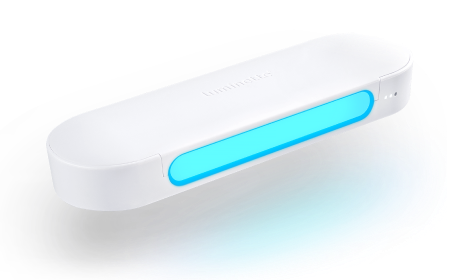


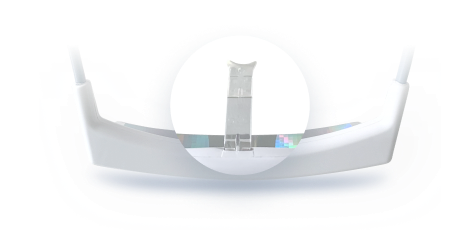


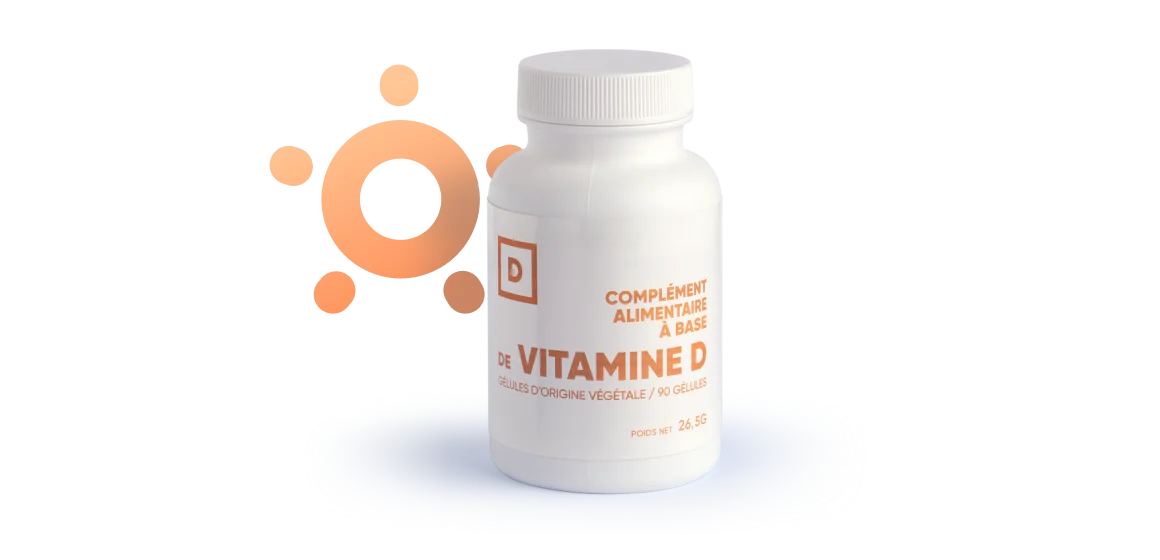





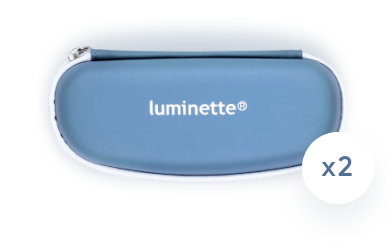





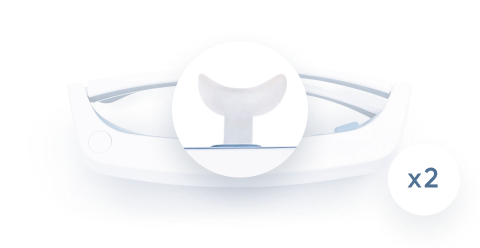






















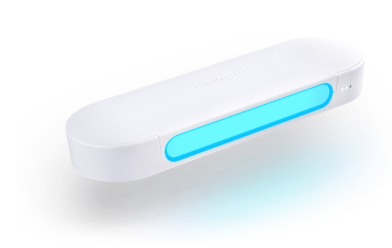




 Please note
Please note






